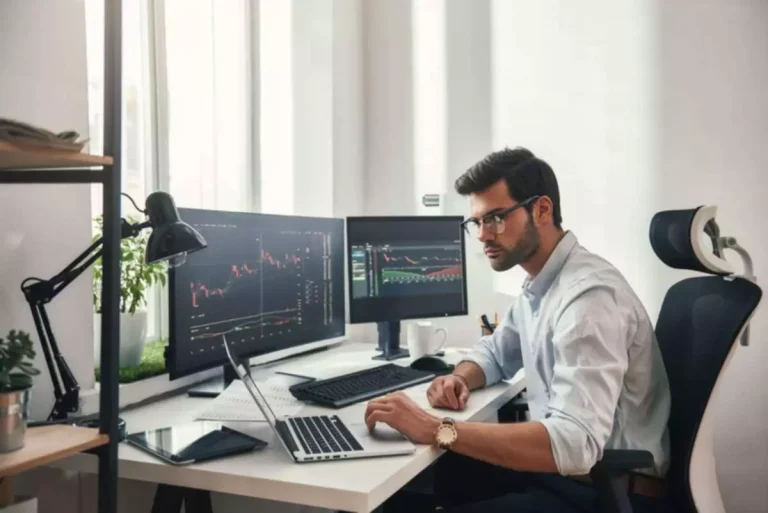Master Liquidity in Forex Trading with 3 Step Guide ICT Tradings
Content
My passion for the financial world drives me to produce content that is both insightful and valuable for those interested in understanding market trends and financial strategies. Buy-Side Liquidity (BSL) and Sell-Side Liquidity (SSL) represent pools of stop orders above highs or below lows. Retail traders are at risk of falling into these traps, especially when placing stop-loss orders at predictable levels. Trading liquidity hunts involves high risk, including market manipulation, false breakouts, and unexpected volatility. https://www.xcritical.com/ Traders should avoid predictable stop-loss levels, practice proper risk management, and be cautious of over-leveraging, which can magnify losses during liquidity hunts.
Liquidity in Crypto Asset Markets
These orders are targeted by institutional traders to generate liquidity for large sell orders, often leading to a price reversal after the buy stops are triggered. These orders are often stop-loss orders placed by traders who are holding short positions. Above the swing high or above top of ICT dealing range, the resting liquidity is referred to as buy side liquidity. When market what is buy side liquidity approaches the levels, institutions may drive price higher.
How do liquidity pools affect Forex trading execution?
“If the buy side already has a relationship with the agency broker, then the role of the agency broker potentially makes this more palatable to the buy side,” said the equity trader. As buy-side traders cope with fragmented liquidity and stagnant volumes in the continuous, lit European equity markets, institutions have forged direct relationships with market makers as an alternative channel. Market orders, on the other hand, involve buying or selling at the current market price. Sell-side liquidity allows sellers to sell securities in large amounts without impacting prices.
ICT Tradings – Built by the traders, for the traders & everyone else.
Removing the BTC on CEXs outside the U.S. would further reduce the Bitcoin liquid inventory to six months, as U.S. spot ETFs would only source BTC from local entities. However, there are different views on how access to bilateral liquidity is going to evolve. Conversely, skilled swimmers or those well-prepared can enjoy deep waters. In the financial realm, market liquidity operates similarly—too much or too little can pose issues. Market liquidity refers to the ability of a market to effectively handle large buy and sell orders.

The ‘Gap Factor’ value will determine the size of the Fair Value Gap and it is preset to a value of ‘1’. In order for the indicator to highlight smaller Fair Value Gaps, simply utilize a decimal value. In the image below, a Gap Factor of .25 was used to achieve greater granularity and discover smaller Fair Value Gaps that exist on the chart. A common practice amongst users is to utilize the horizontal line drawing tool and set alerts at important Fair Value Gap levels. Zones invite periodic retests, keeping the implied volatility elevated.
Excessive money can increase prices as demand rises, leading to inflation and economic bubbles. If you want to use buy side and sell side liquidity, here’s what you need to know. This ensures that investors, especially big ones, can execute significant trades with minimal slippage, avoiding substantial price fluctuations. They absorb all available liquidity, influencing market dynamics and ensuring profit-making.
This leads to a domino effect of more orders being executed, creating a lot of buying pressure. The influx of new buy orders above the level can push the price even higher very quickly, leading to potential profits for traders who have identified and traded this setup. In times of macro uncertainty liquidity dries up on overall markets causing higher volatility, often led to the downside. In this article we will look both from a macro-perspective and a market microstructure perspective on the aspects of liquidity shortages.
This happens by pushing the price above key resistance area (swing high) where these stops are placed. Monitoring liquidity levels closely will enable an outline of the market structure to be laid out, including shifts in sentiment and potential turning points for trade selection. For a trader, it’s still important to monitor changes in liquidity and market structures through time. Groups inclined to one side will consolidate in the range, all the while narrowing on which sides are building conviction, while breakouts will reveal which bias took control.
In true TradingView spirit, the author of this script has published it open-source, so traders can understand and verify it. You may use it for free, but reuse of this code in publication is governed by House rules. Overall, both the buy side and sell side offer fulfilling long-term careers in finance, each with its advantages and trade-offs to consider carefully depending on individual interests, skills, and lifestyle preferences. With experience, both paths can establish a strong professional foundation.
- These orders are placed by long-biased traders as their stop loss in order to close out their long positions.
- Short sellers reasoning the upside momentum has expired may enter shorts at or above these technical levels.
- This results in a sudden surge or decline in price, depending on the direction of the breakout.
- The Forex landscape is continually shaped by the entities that drive the market’s liquidity.
- A common practice amongst users is to utilize the horizontal line drawing tool and set alerts at important Fair Value Gap levels.
- This happening on decentralized exchanges (DEXes) that are not as traditional markets based on limit order-books, but on liquidity pools and a quote-based market.
- “If the buy side already has a relationship with the agency broker, then the role of the agency broker potentially makes this more palatable to the buy side,” said the equity trader.
These accumulations of orders are prime targets for buy side liquidity providers that seek to manipulate market movements to their advantage. Individual traders can identify and trade with big players by analyzing market liquidity, price action, and volume data. Buy side liquidity providers in Forex are typically large financial institutions, investment firms, or other entities with the financial capacity to place sizable trades.
Identifying these Forex entry points can give traders an edge, allowing them to align with the upward movement anticipated by the collective market sentiment and the strategies of institutional traders. As many traders know, the basics of trend say that in an uptrend, the price is making higher highs and higher lows and in a downtrend, the price is making lower highs and lower lows. A market structure shift is represented by a level on the chart where the previous trend is broken. If the price is in an uptrend, the market structure shift level is where a lower low is made.
These sell stops are typically positioned below key levels, such as the lows of the previous day, week, and month. Understanding these levels are crucial, as they indicate points where significant amounts of sell orders may trigger, leading to a potential market reversal. Buyside Liquidity (BSL) refers to the price levels where a large amount of pending buy orders are placed. These orders are placed by short sellers at their stop loss in order to close out their short positions.
SMC and ICT traders wait for the price to pullback to the premium area (50% of the ICT Dealing Range). PD Array refers to key price levels like Order Blocks, Fair Value Gaps, or Imbalances zone. These zones are considered as attractive zone for entering sell positions. Buy side liquidity forex refers to the presence of buy orders, particularly above market price ranges or highs, that are awaiting execution. This includes orders like sell stop losses and buy stop limit orders, which play a significant role in the dynamics of institutional trading and overall market mechanics.
In cash equities, where institutions are concerned about information leakage, it presents its liquidity though indications-of -interest (IOIs). “For us, it’s crucial that these IOIs are updated, that they are actionable and live,” said Schaijk. Because it presents the IOIs as actionable, the buy side firm can trade at a certain price level without the risk of information leakage.

Buy side liquidity providers are the juggernauts of the Forex marketplace, consisting of investment banks, pension funds, mutual funds, and other large institutional investors. These entities possess the capital clout and the market acumen to navigate vast oceans of orders, discreetly aligning their trading strategies with existing liquidity to shift market currents. The infrastructure of market liquidity is comprised of resting orders, which represent the queued buy and sell orders at various price levels ready to be executed. These orders, especially when aggregated in large amounts, form a substantial liquidity pool. Sellside Liquidity (SSL) refers to the price levels where a large amount of pending sell orders are placed. These orders are placed by long-biased traders as their stop loss in order to close out their long positions.
